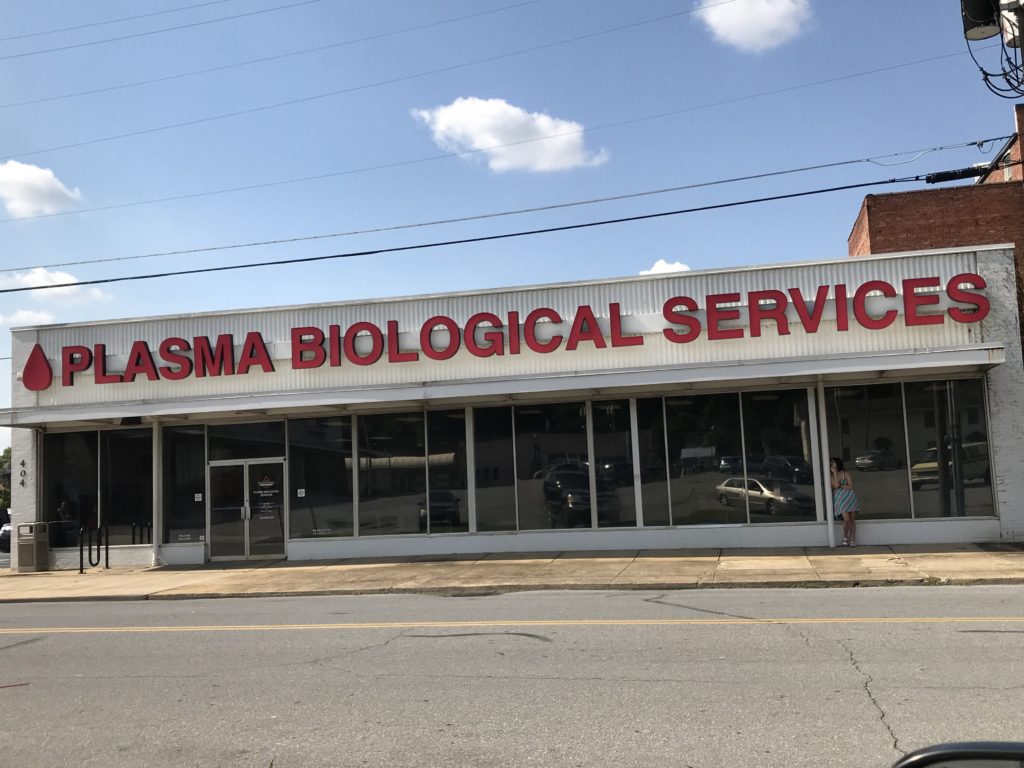As a college student, you may not have work study on campus or a job off of campus. You might get money from your parents for gas and books, but outside of that, you you might not have anything else. However, there is hope!
The Plasma Biological Center in downtown Johnson City is a quick and easy way to earn extra cash while also possibly saving someone’s life. To become a new plasma donor, you need to bring a valid photo ID (drivers license), social security card, and proof of address (or student ID) when you first go in. You will then be given a brief physical by one of the on-hand doctors.
If you pass the physical, they will have you go out to the lobby and answer questions on a kiosk; you will do this part every time that you come in. Once finished, you will sign in on the clipboard at the front desk and wait for your name to be called for processing.
David Simonsen, a junior at Milligan, has been going to PBS for a year and two months total; it is safe to say that he has the whole process memorized. “Processing starts with you confirming your name, birthday, and social security number. They will then check your blood pressure and temperature; if these are good, then they will proceed to prick your finger and take a blood sample to read your plasma levels.”
You will then be asked which arm you want to use and be led to one of several donation beds, where they will ready the plasma-drawing machine. They will find your vein and swab the area with iodine to clean it. They will then stick your arm with a needle and tape it to your arm. At this point, you will continuously squeeze your hand in order to pump blood into the machine.
The machine is designed to separate your red blood cells and your plasma. In intervals, it will take your blood and separate it, and then it will give your red blood cells back with a blood thinner so that you don’t get clots. Once you are done, you will be given a bag of saline solution so that you do not get dehydrated. You will then be given a card that your money will be deposited onto, and you are good to go!
Now some people have concerns about donating plasma: whether it is safe or not, where the plasma goes after we donate it. Dr. Ashley Stiltner is the Assistant Professor of Anatomy at Milligan, and she has some answers:
“Plasma is the liquid portion of the blood. It provides the medium in which oxygen, nutrients, waste, antibodies, hormones, and other materials travel through the circulatory system. In the medical field, plasma donations are often used for research or development of pharmaceuticals.”
She adds that “given that the donor is healthy, there should be no concerns. Blood plasma is replaced rather quickly (12-24 hours).”
If you are short on cash, or want to help make other’s lives better, you should consider donating plasma. The knowledgeable and kind staff are there to make sure that everything goes well, you get some cash and you are potentially helping researchers find new medicines to make humanity more healthy!

